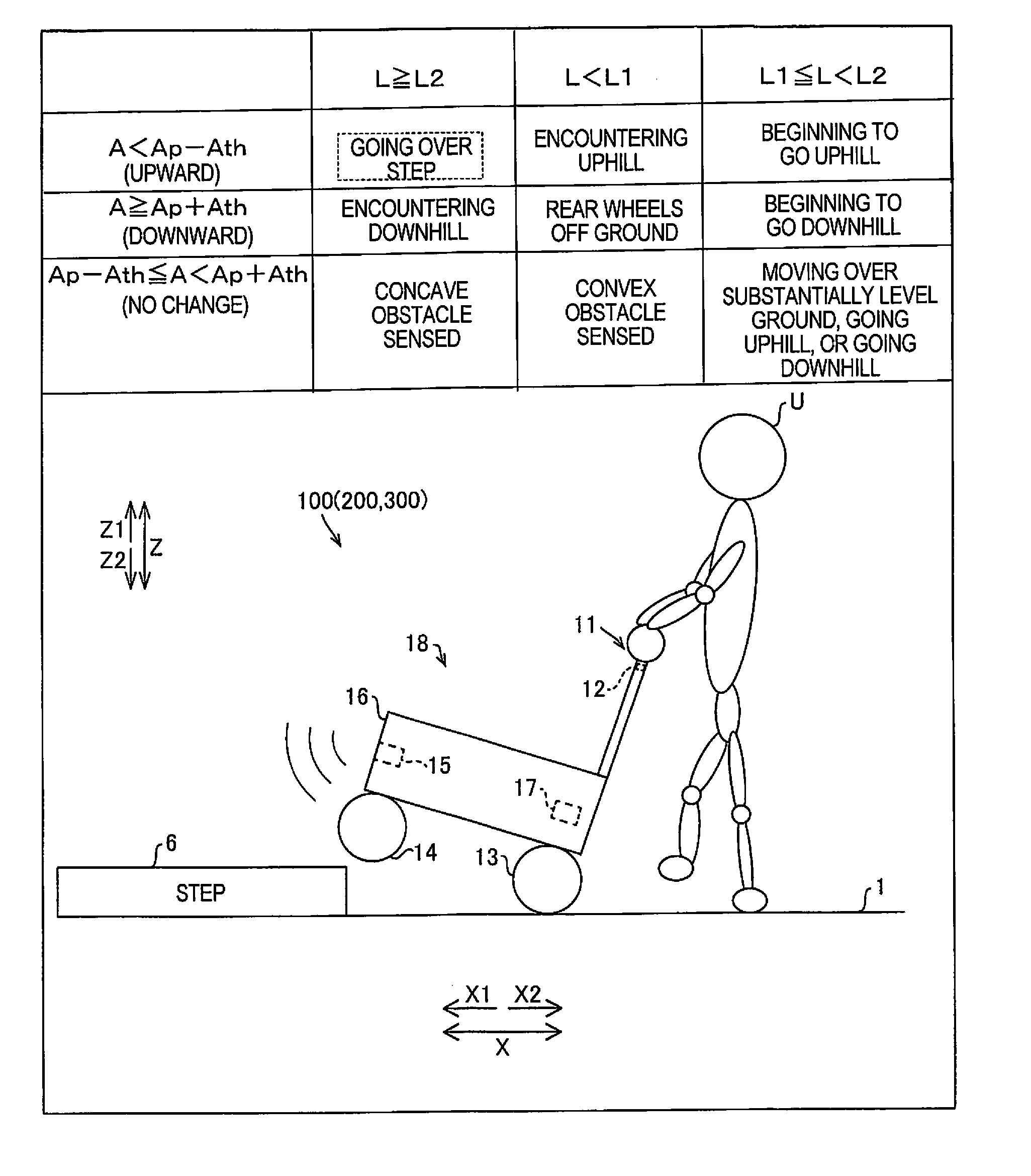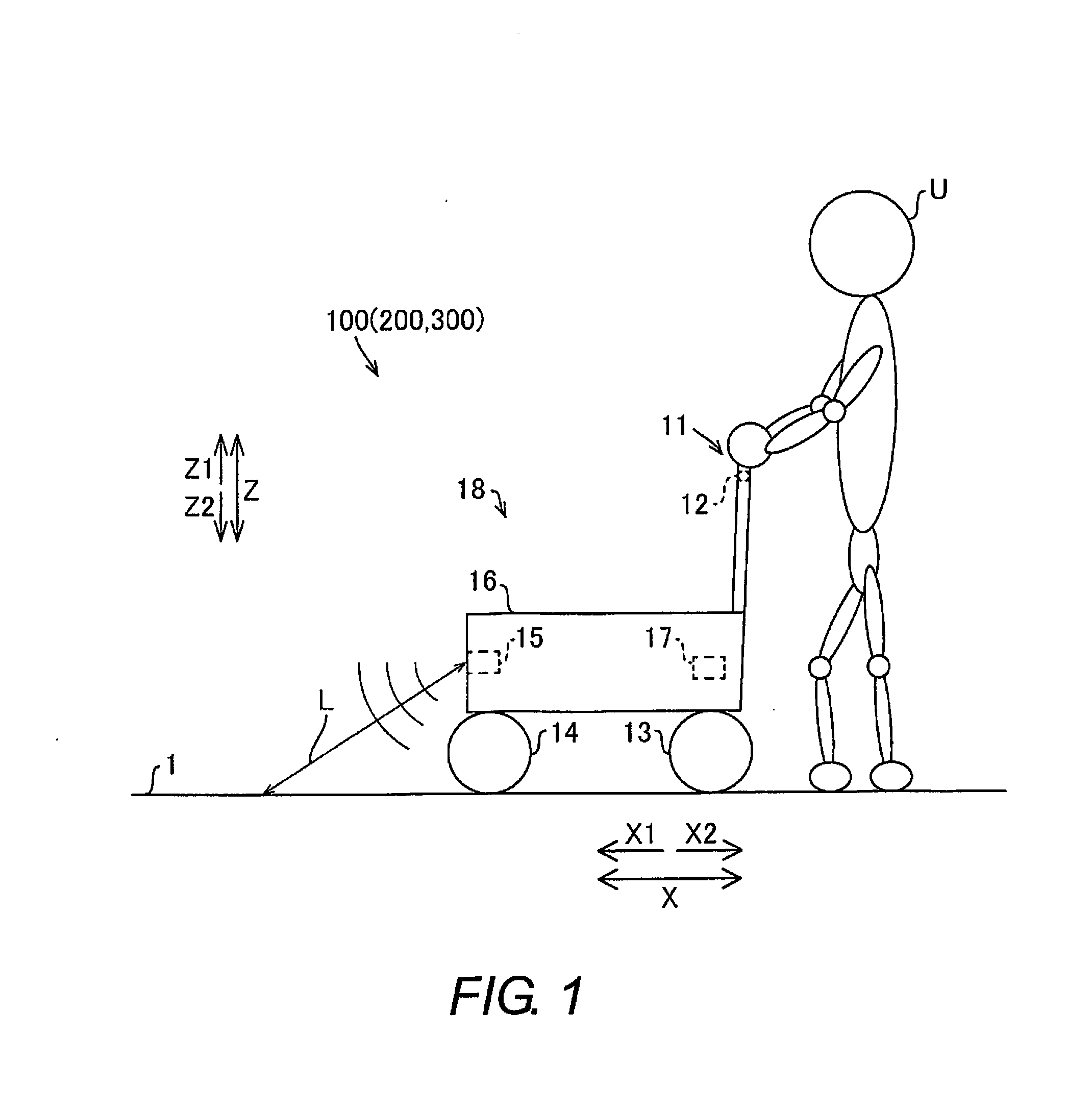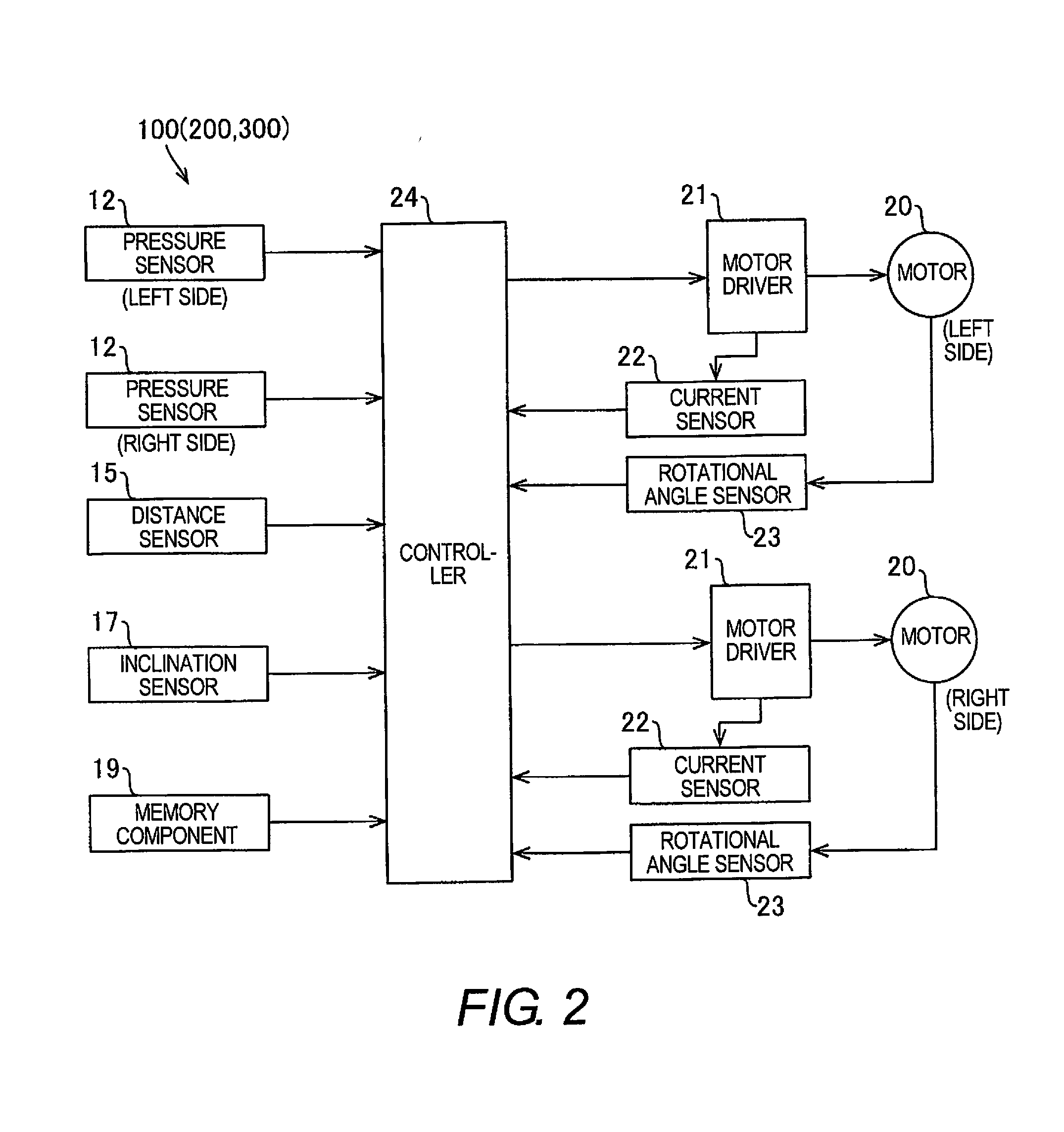Walking assistance moving vehicle
- Summary
- Abstract
- Description
- Claims
- Application Information
AI Technical Summary
Benefits of technology
Problems solved by technology
Method used
Image
Examples
first embodiment
[0029]Referring to FIGS. 1 to 14, a walking assistance moving vehicle 100 is illustrated in accordance with a first embodiment.
[0030]As shown in FIG. 1, the walking assistance moving vehicle 100 in accordance with the first embodiment includes a grip component 11, a pressure sensor 12, a pair of left and right drive wheels 13, a pair of free wheels 14, a distance sensor 15, a bed 16, and an inclination sensor 17. The grip component 11 is gripped by a user U. The pressure sensor 12 senses an input force P applied to the grip component 11. The drive wheels 13 are driven by drive motors 20 (discussed below; see FIG. 2). The free wheels 14 passively rotate due to the drive of the drive wheels 13. The distance sensor 15 senses the distance to an object ahead of (on the X1 direction side of) the walking assistance moving vehicle 100. Various kinds of cargo can be loaded on the bed 16. The inclination sensor 17 senses the inclination (inclination angle) of the walking assistance moving veh...
second embodiment
[0082]Referring now to FIGS. 2, 3 and 15, a walking assistance moving vehicle 200 in accordance with a second embodiment will now be explained. In view of the similarity between the first and second embodiments, the parts of the second embodiment that are identical to the parts of the first embodiment will be given the same reference numerals as the parts of the first embodiment. Moreover, the descriptions of the parts of the second embodiment that are identical to the parts of the first embodiment may be omitted for the sake of brevity. In this second embodiment, unlike in the first embodiment above in which the assist on mode is set when going over the step 6, a step crossing mode for going over the step 6 is further provided in addition to the assist on mode, the assist off mode, and the stop mode as the operating mode of the walking assistance moving vehicle 200. This step crossing mode is an example of the “rearward assist off mode” of the present invention.
[0083]The processing...
third embodiment
[0092]Referring now to FIGS. 2, 3 and 16, a walking assistance moving vehicle 300 in accordance with a third embodiment will now be explained. In view of the similarity between the first to third embodiments, the parts of the third embodiment that are identical to the parts of the first and second embodiments will be given the same reference numerals as the parts of the first and second embodiments. Moreover, the descriptions of the parts of the third embodiment that are identical to the parts of the first and second embodiments may be omitted for the sake of brevity. In this third embodiment, unlike in the second embodiment above, the drive wheels 13 (see FIG. 3) are locked (prevented from rotating) when the rearward input force P in step crossing processing is at least the threshold P1 of the input force.
[0093]Referring to FIGS. 2, 3, and 16, the step crossing processing for the walking assistance moving vehicle 300 (see FIG. 2) in accordance with the third embodiment will be expl...
PUM
 Login to View More
Login to View More Abstract
Description
Claims
Application Information
 Login to View More
Login to View More - R&D Engineer
- R&D Manager
- IP Professional
- Industry Leading Data Capabilities
- Powerful AI technology
- Patent DNA Extraction
Browse by: Latest US Patents, China's latest patents, Technical Efficacy Thesaurus, Application Domain, Technology Topic, Popular Technical Reports.
© 2024 PatSnap. All rights reserved.Legal|Privacy policy|Modern Slavery Act Transparency Statement|Sitemap|About US| Contact US: help@patsnap.com










